
Top 8 Reinforcers for Dogs
A reinforcer is defined as anything that increases the likelihood for behavior to reoccur.
Most people know when it comes to dogs, treats usually get a behavior to happen again, otherwise deemed positive reinforcement. So, if I teach a dog to sit and every time their rear hits the floor, they get a yummy treat, they will probably want to do THAT behavior again! I mean, let’s talk about humans; if I asked you to sit and you do it when I ask you, and I hand you $50, you would probably do it again too! Now, while treats are a fabulous reinforcer for a LOT of dogs, it’s not the top reinforcer for all dogs, nor is it the only reinforcer…and it shouldn’t be the only reinforcer.
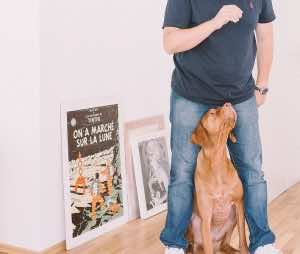
All creatures are motivated by different things. Some things cross over, but some species have many more motivators compared to dogs. Humans, for example, are motivated by money, family/friends, food, success, power, acts of service/charity, “toys” or material possessions, etc. Dogs, thank goodness, are quite a bit simpler.
To help with this, I’ve grouped the top 8 reinforcers/motivators for dogs. There are many others out there, but I think most can be lumped into these categories.
1. Food – ANY treat is not always a treat. You do not value food the same across the board, nor does your dog. Yes, some dogs will literally eat ANYTHING, and obviously, they are easier to motivate with food. But most dogs do have preferences! You can start with treats when you want to teach the dog something new, but then begin fading off treats and replacing them with OTHER reinforcers listed below depending on what would be appropriate in the situation and how YOUR dog ranks them.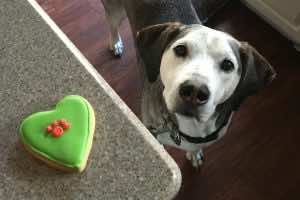
2. Toys – Does your dog like toys? Does he have any favorites? Toys entirely drive some dogs, and other dogs do like toys, but they have higher motivators. The best example of this is using toys during play to ask for cues. If you sit, you get the toy! If you do a relaxed and settled down and wait, you can get your favorite toy!
3. Play – Super common in puppies! I see examples of this all the time. Puppies are biting on humans, and they continue to “play” or “wrestle” with them, and so they keep biting, and it gets worse. You’re reinforcing the biting with “play.” Same works for jumping too. If you push the dog “off” of you, even if you’re upset, the dog may interpret that as play! Another classic example is when people are walking their dog, and the dog drags them across the street to “play” with another dog, person, kid, etc. If they let the dog pull them and the dog gets to “play,” – you just reinforced the pulling!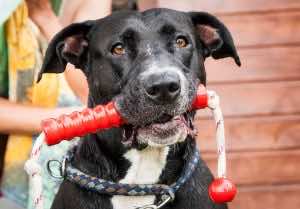
4. People – To some dogs, their people are the reinforcer/motivator. Maybe they have their “favorite” person in the family who they listen to the best. It may or may not be the person that feeds them, cares for them, and trains with them, but most likely, it will be! To some dogs (*cough* doodles *cough*), NEW people are the motivators! And every time they meet someone new or the new person continues to come towards them, pet them, talk to them… all while the dog is jumping all over them – this is a super strong reinforcer!
5. Affection/Attention/Praise – Not all dogs are reinforced by attention. A lot are, but this usually comes later in a relationship with your dog. Similarly, you aren’t comfortable with a lot of praise/attention/affection from a stranger or an acquaintance, as you might be with a romantic partner or family member. Dogs are like people in this aspect too. SOME dogs see this as a punishment, NOT a reinforcer. If a very fearful dog finally gets the courage to let you get close, and you reach out and pet them too much, go over their head, move too fast or make them uncomfortable in any way – they actually may take LONGER the next time because you “punished” them when they were brave by being a little TOO much.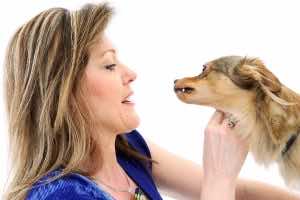
6. Resource – Does your dog like going on walks? Does your dog like the leash? The bed? The couch? Does he like going in the car? He doesn’t get to do ANY of those things without doing AT LEAST 1 cue, but maybe 2 or 3! It’s an opportunity to do training any time there is something that he/she WANTS to do! And it reinforces training without a treat needed. If I want to take my dog on a walk, he is required to sit down, wait for the door to open, and for me to release him when I am ready for him to move! If I am putting a leash or harness on a dog, if I let him bounce all over the place to let me get the leash on, I am reinforcing that behavior by continuing to put the leash on because that’s what he wants at that moment. By me not telling him to do anything else, he thinks that behavior works – because it does! Instead, I ask my dog to sit and wait patiently while I leash him. If he stands up, so do I! If he stays seated and calm, I continue to put the leash on!
7. Distance – Does your dog like other dogs or no? Either way, distance from something can be a reinforcer. If you’re walking towards something they like, only let them approach if they do a behavior you want. If it’s something they don’t like, then increase distance AWAY from that thing when they act nicely, reinforcing that behavior. If you don’t like spiders and I tell you that if you stay calm and don’t scream, I will take the spider away. And I follow through on that by taking the spider away further and further the longer you remain calm, the more you trust me, and the more likely you will stay calm the next time I ask you.
8. Scents – Wanting to smell something is a driving force for some dogs, and it is a HUGE motivator for those dogs. Use it and create games and situations where you can reward them with being able to go smell!
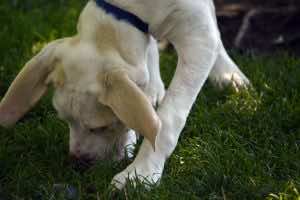
Dogs DO NOT rank all these reinforcers the same! Just like we have different motivators, so does your dog. It would help if you learned what your dog values, and it will adjust and change over time as they grow up and mature. Part of being in any relationship is to learn to grow together, not apart!
I hope that these reinforcers will help you build a relationship with your dog and train them to listen to you. If you need more explanation on how to continue to train your dog, I am now offering online consultations. Schedule one now!
